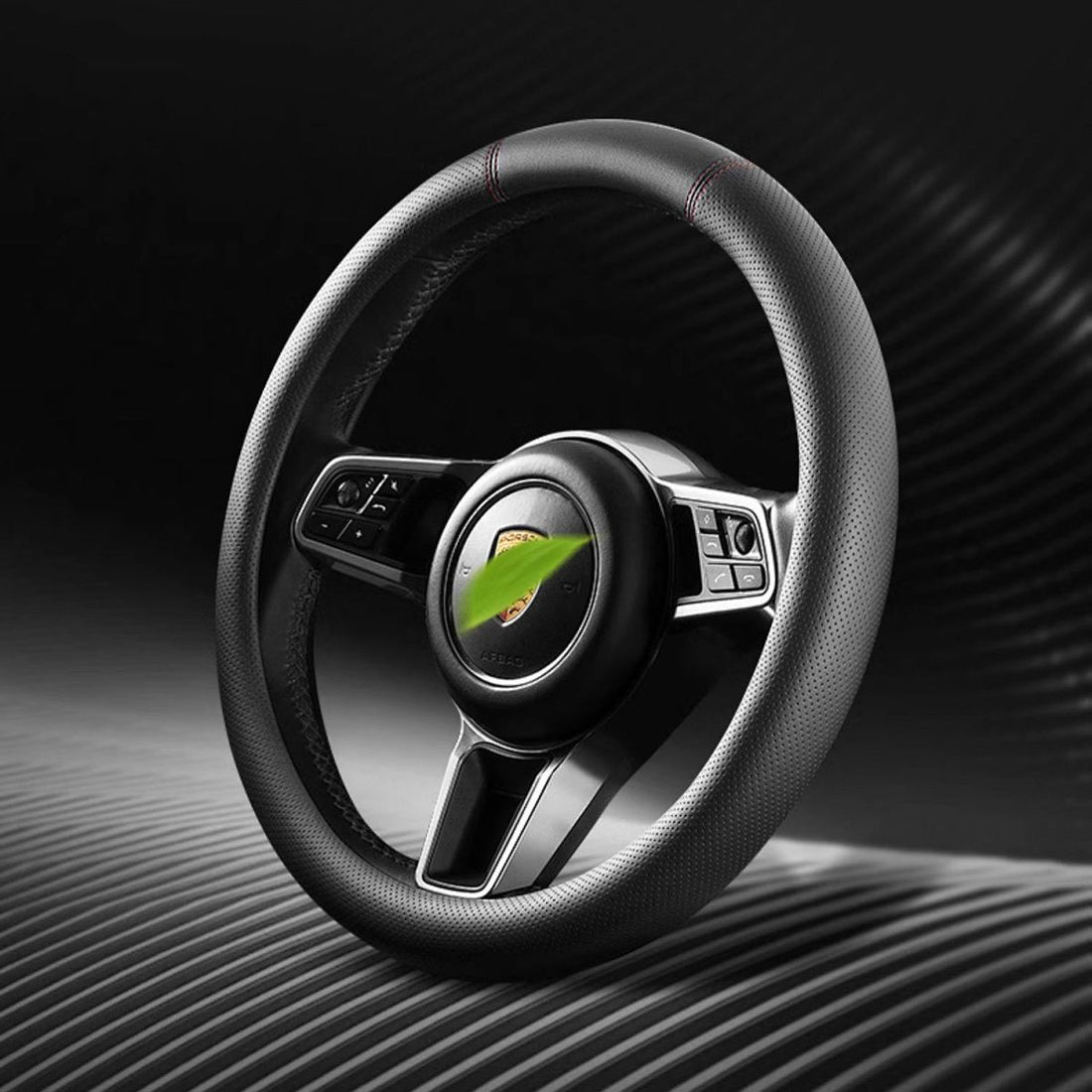
The Hidden Dangers of Steering Wheel Covers: Improper Usage Could Lead to Accidents
Share
When it comes to car accessories, steering wheel covers are one of the most popular choices. They offer a variety of benefits, from improving grip to adding a touch of style to your vehicle’s interior. However, many drivers may not be aware that using a steering wheel cover improperly can pose serious safety risks. In this blog, we’ll explore how incorrect usage of steering wheel covers can lead to accidents, and offer tips to ensure you're using them safely.
1. Reduced Steering Control: Grip Matters
One of the primary functions of a steering wheel cover is to improve grip and comfort. However, if the cover is made from a slippery material or is too thick, it can actually reduce your ability to control the wheel. In critical situations—like making an emergency lane change or avoiding an obstacle—you need a firm, steady grip to respond quickly. A slippery or too-thick cover could prevent you from having the control you need, potentially increasing your reaction time and putting you at greater risk of an accident.
Tip: Always choose a cover that offers a firm but comfortable grip, without making the wheel feel bulky or too slick.
2. Interference with Airbag Deployment
Most modern cars are equipped with airbags that deploy in the event of a crash. However, not all steering wheel covers are designed with airbag safety in mind. If a cover is too thick or poorly designed, it can interfere with the airbag’s deployment, reducing its effectiveness during a crash. An obstructed airbag may not deploy fully, or it could deploy in an unintended manner, increasing the risk of injury to the driver.
Tip: Choose a steering wheel cover that is airbag-compatible. Many covers are designed specifically to ensure that the airbag system functions properly in case of an emergency.
3. Loss of Sensitivity and Control
Some steering wheel covers, especially those that are oversized or feature bulky designs, can mask important features on your steering wheel, such as buttons for cruise control, volume adjustments, or even airbag warnings. In the heat of the moment, when you need to react quickly, missing a button or a control could make the situation even worse. Furthermore, an oversized cover may impact the steering wheel’s sensitivity, making it more difficult to make precise turns or adjustments.
Tip: Opt for a cover that doesn’t obstruct any vital controls or features on the steering wheel, and ensure it doesn't interfere with the steering wheel's natural responsiveness.
4. Slippage While Driving: A Recipe for Disaster
Another common issue with poorly installed steering wheel covers is slippage. If the cover is not securely attached or isn’t the right size, it can rotate or slip while you're driving. This can be extremely dangerous, especially in an emergency situation. If the cover slips while you're trying to steer, it could cause you to lose control of the vehicle, potentially leading to an accident.
Tip: Always ensure the cover is properly fitted and securely installed on the wheel. Regularly check to ensure it hasn’t loosened or become damaged over time.
5. Heat Retention: A Hidden Burn Hazard
In the summer months, steering wheels can become unbearably hot, especially when parked in the sun. While some steering wheel covers are designed to protect your hands from heat, others can actually worsen the situation. Certain materials, like synthetic plastics or rubber, tend to retain heat and can become extremely hot to the touch. This not only makes for an uncomfortable driving experience but could also cause burns to your hands, distracting you while driving.
Tip: If you’re using a cover, ensure it is made from breathable, heat-resistant materials. Additionally, consider removing the cover during peak heat periods to avoid potential heat-related accidents.
6. Obstructed Visibility and Warnings
Steering wheel covers with thick padding or added embellishments may cover essential safety warnings or labels, including airbag deployment instructions or warning lights. In an emergency, being able to see these warnings can be critical for your safety. Missing these indicators can lead to confusion and delay your response in a dangerous situation.
Tip: Choose a cover that doesn’t obscure important safety warnings or controls. Make sure it allows for full visibility of the steering wheel and any critical indicators.
How to Use Steering Wheel Covers Safely
To enjoy the benefits of a steering wheel cover without compromising safety, follow these tips:
1. Choose a Properly Sized Cover: A cover that is too large or thick can impede your ability to steer. Ensure the cover fits snugly and doesn’t add unnecessary bulk.
2.Check for Airbag Compatibility: Make sure the cover is designed to work with the airbag system in your car, ensuring it won’t obstruct or interfere with airbag deployment.
3.Opt for High-Quality Materials: Use covers made from non-slip, heat-resistant materials that provide a good grip without compromising comfort.
4.Install Securely: Always install the cover according to the manufacturer's instructions to ensure it stays in place during driving.
5.Regularly Inspect the Cover: Check for signs of wear and tear. A damaged cover may not provide the necessary safety features and could slip or interfere with your driving.
Conclusion
While steering wheel covers are a popular way to enhance comfort and style, they should be used with care to avoid safety hazards. By selecting a high-quality cover that is properly fitted, made from suitable materials, and designed with airbag compatibility in mind, you can enjoy the benefits of a steering wheel cover without compromising your safety. Always remember: the safety of you and your passengers should always come first!
